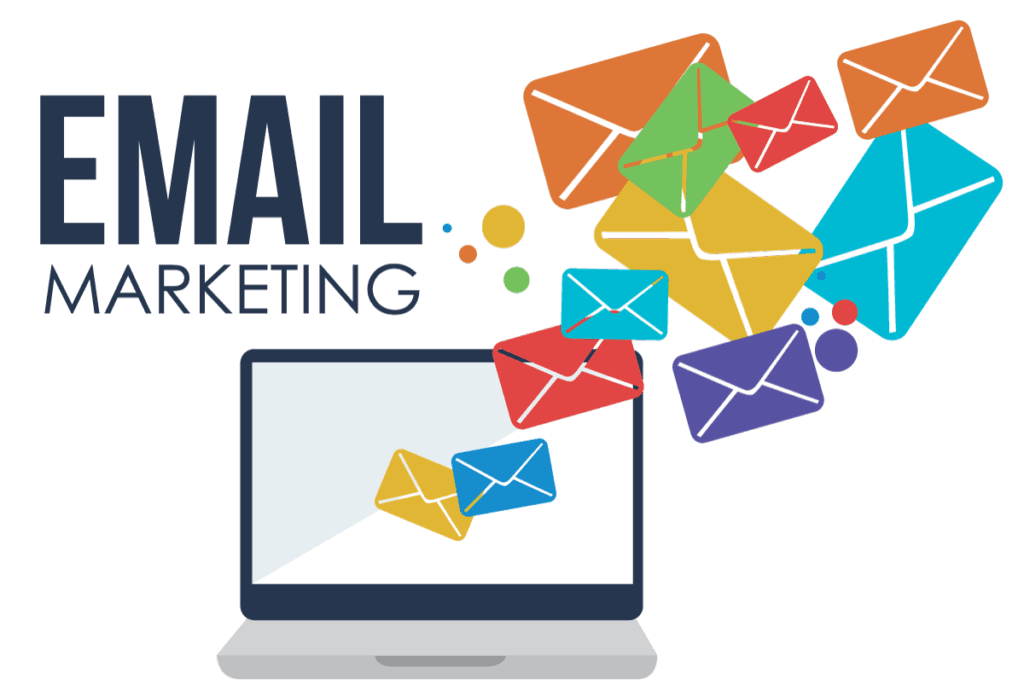Email Marketing Conversion Rates by Industry Benchmark 2025
Table of Contents
Unlock the Power of Email Marketing: 2025 Industry Benchmark Conversion Rates Revealed
Email marketing continues to be a cornerstone of Digital Marketing Strategies, offering businesses a direct line to their customers. As we approach 2025, understanding the expected conversion rates, open rates, and click-through rates becomes crucial for optimizing email marketing campaigns.

This article explores the benchmarks and trends shaping the email marketing landscape, providing insights to enhance your email marketing performance in the coming years.
Search Engine Optimization (SEO) Marketing
Client:
ANJ Plumbing - Anjservices.com
Category:
Digital Marketing
Start Date:
10 March, 2021
End Date:
Still Growing
Keywords Growth
+475% Top 10 Keyword Rankings
Leads growth
+266% Monthly Lead Growth
Conversion
+346% Conversion increase
Live Chat
+120% Live Chat Request increase
Here are the projected Email Marketing Conversion Rates by Industry for 2025:
Top Performing Industries:
- Healthcare/Medical: 4.2% - 5.1%
- Financial Services: 3.8% - 4.7%
- Professional Services: 3.5% - 4.3%
- Education: 3.4% - 4.1%
- Real Estate: 3.2% - 3.9%
Average Performing Industries:
- E-commerce/Retail: 2.8% - 3.5%
- Technology/Software: 2.7% - 3.4%
- Marketing/Advertising: 2.6% - 3.2%
- Manufacturing: 2.5% - 3.0%
- Travel/Hospitality: 2.4% - 2.9%
Lower Performing Industries:
- Media/Entertainment: 2.0% - 2.6%
- Food/Beverage: 1.8% - 2.4%
- Nonprofit: 1.7% - 2.3%
- Sports/Recreation: 1.6% - 2.2%
Key Factors Affecting These Rates:
- Mobile optimization
- Personalization level
- Segmentation quality
- Email automation
- Landing page quality
Understanding industry-specific email conversion rates
As we look toward 2025, email marketing conversion rates are expected to vary significantly across different industries. For instance, the retail sector may see higher conversion rates due to direct promotions and seasonal sales, while the B2B sector may experience lower rates due to longer decision-making processes. Understanding these industry-specific benchmarks is essential for setting realistic conversion goals. By analyzing past email marketing efforts and industry standards, businesses can better tailor their email campaigns to achieve higher conversion rates.
Factors influencing email marketing conversion rates
Several factors play a crucial role in determining email marketing conversion rates. First and foremost, the quality of your email list significantly influences your conversion rates; a well-maintained email list with engaged subscribers is more likely to yield positive results. Additionally, the timing and frequency of your email campaigns can affect how recipients respond. Sending emails at optimal times can lead to higher open rates and ultimately drive conversions.
Projected trends in email conversion rates for 2025
Looking ahead, several trends are expected to influence email conversion rates in 2025. One notable trend is the increasing emphasis on personalization and segmentation. As consumers become more discerning, personalized email campaigns that cater to individual preferences are likely to see higher conversion rates. Additionally, automation tools are expected to play a significant role in optimizing email marketing efforts, allowing businesses to send timely and relevant emails to their subscribers.

How do email open rates vary across different industries?
Research indicates that email open rates exhibit significant variation across different industries. For instance, the retail sector often experiences higher open rates due to promotional content and seasonal campaigns. In contrast, the financial services industry may report lower open rates, primarily attributed to the more formal and less engaging nature of its communications. Understanding these disparities is crucial for businesses aiming to optimize their email marketing strategies and enhance overall engagement.
Comparing average email open rates by sector
Email open rates can vary significantly across different industries, reflecting the diverse nature of consumer engagement. For instance, industries such as retail and hospitality often report higher average email open rates due to their promotional nature, while sectors like finance and healthcare may see lower rates due to stricter regulations and less frequent communications. Understanding these variances is essential for setting realistic expectations for your email marketing campaigns.
Strategies to improve your email open rates
Improving your email open rates requires a multifaceted approach. One effective strategy is to optimize your email subject lines. Crafting compelling, concise subject lines that create a sense of urgency or curiosity can significantly increase the likelihood of your emails being opened. Additionally, segmenting your email list allows you to send targeted messages that resonate with specific groups of subscribers, further enhancing your open rates.
Impact of email subject lines on open rates
The email subject line is a critical factor influencing open rates, serving as the first impression for your email recipients. A strong subject line can entice subscribers to open your email, while a lackluster one may lead to it being ignored or marked as spam. Research shows that subject lines that are personalized or include relevant keywords tend to perform better, resulting in higher open rates.
What are the benchmark click-through rates for email marketing in 2025?
The benchmark click-through rates for email marketing in 2025 indicate a notable evolution in consumer engagement. It is essential to recognize that this rate varies depending on several factors, including industry, audience demographics, and content quality. For instance, sectors such as e-commerce typically experience higher engagement compared to more traditional industries. Furthermore, personalized content and strategic segmentation are crucial elements that significantly influence these rates, making them a vital consideration for marketers aiming to optimize their email campaigns.
Industry-specific click-through rate benchmarks
Click-through rates (CTR) are another critical metric in evaluating email marketing performance. As we approach 2025, industry-specific benchmarks for click-through rates will continue to evolve, reflecting changes in consumer behavior and engagement strategies. For instance, the average click-through rate for retail emails may hover around 2-3%, while B2B emails might exhibit slightly lower rates due to the nature of the sales cycle.
Techniques to boost your email click-through rates
Boosting your email click-through rates involves a combination of engaging content and effective calls to action (CTAs). Including clear and compelling CTAs within your emails encourages recipients to take the desired action, whether it's visiting your website or making a purchase. Additionally, ensuring that your email content is relevant and valuable to your audience can significantly impact CTR.
Relationship between open rates and click-through rates
The relationship between open rates and click-through rates is a crucial aspect of email marketing performance. Generally, a higher open rate indicates that your subject lines and sender reputation are effective, while a strong click-through rate signifies that your email content resonates with your audience. However, it is essential to recognize that open rates alone do not guarantee conversions; the quality of your email content is equally important.
How can you improve your email marketing performance in 2025?
To enhance your email marketing performance in 2025, it is essential to focus on reducing your spam rate. A lower spam rate can significantly improve your good email open rate, thereby increasing the likelihood of engagement with your audience.
Furthermore, optimizing your content and targeting strategies can effectively boost your conversion rates. By analyzing the average email conversion rate and implementing best practices, you can refine your approach to achieve superior email marketing results.
Ultimately, the goal is to improve both open and click rates, which will directly contribute to enhancing your overall marketing performance.
Key metrics to track for email marketing success
Tracking key metrics is essential for measuring email marketing success and identifying areas for improvement. Key performance indicators (KPIs) such as open rates, click-through rates, conversion rates, and unsubscribe rates provide valuable insights into the effectiveness of your email campaigns. By regularly monitoring these metrics, businesses can assess their email marketing performance and make data-driven decisions to enhance their strategies.
Optimizing email content for higher conversion rates
Optimizing email content is crucial for achieving higher conversion rates. Engaging and relevant content that speaks directly to the needs and interests of your subscribers can significantly impact their likelihood of taking action. Utilizing personalization techniques, such as addressing subscribers by name and tailoring content to their preferences, can enhance the relevance of your emails and drive better results.
Leveraging email marketing platforms for better results
Utilizing email marketing platforms can significantly enhance your email marketing performance. These platforms offer a range of tools and features designed to streamline the email marketing process, from automation to analytics. By leveraging these capabilities, businesses can create targeted email campaigns that resonate with their audience and drive higher conversion rates.
What are the expected bounce and unsubscribe rates for 2025?
As we project into 2025, the anticipated bounce and unsubscribe rates will be influenced by advancements in email deliverability and email engagement. By 2023, businesses have increasingly recognized the importance of marketing automation to boost your email marketing efforts. The effectiveness of an email sequence will be measured against established email benchmarks, with a focus on those who have opened the email and the overall open and click rates.
Furthermore, it is essential to optimize your email marketing strategies to enhance boost your email marketing conversion rates. Understanding email marketing as a pivotal marketing channel necessitates a thorough analysis of consumer behavior, particularly regarding the likelihood of opening an email. The rate also varies depending on the quality of the list of email recipients and how effectively one can set up email campaigns.
To ensure success, marketers must implement tips for improving email marketing practices, focusing on personalization and relevance to maintain lower bounce and unsubscribe rates in the coming years.
Industry benchmarks for email bounce rates
As we look toward 2025, understanding industry benchmarks for email bounce rates is essential for evaluating email marketing performance. Bounce rates can vary significantly by industry, with average rates typically ranging from 0.5% to 2%. A higher bounce rate may indicate issues with your email list quality or deliverability, while a lower rate suggests effective list management and targeting.
Strategies to reduce unsubscribe rates
Reducing unsubscribe rates is vital for maintaining a healthy email list and ensuring continued engagement with your audience. One effective strategy is to provide valuable and relevant content that meets the needs and interests of your subscribers. By consistently delivering high-quality email content, you can foster loyalty and reduce the likelihood of unsubscribes.
Additionally, offering subscribers the option to customize their email preferences can enhance their experience and decrease unsubscribe rates. Allowing recipients to choose the frequency and type of emails they receive empowers them to engage with your brand on their terms. By implementing these strategies, businesses can effectively reduce unsubscribe rates and improve their overall email marketing performance.
Impact of list hygiene on email performance
Maintaining list hygiene is critical for optimizing email performance and achieving higher conversion rates. A clean and well-managed email list ensures that your messages reach engaged subscribers, reducing bounce rates and improving overall deliverability. Regularly cleaning your email list by removing inactive or invalid email addresses helps maintain a healthy subscriber base.

How does the future of email marketing look beyond 2025?
As we look beyond 2025, the landscape of email marketing will continue to evolve, particularly with the anticipated advancements in marketing tools and strategies. By 2024, marketers must focus on building a robust email list to enhance their email marketing strategy. A successful email campaign will prioritize good email open rates and click-to-open rates, as these metrics are essential for evaluating the effectiveness of a marketing campaign.
To boost your conversion rates, brands will need to optimize their email marketing efforts by analyzing email marketing metrics like click-through and conversion rate for email marketing. Understanding the nuances of email type and ensuring a high open rate will be crucial, as rate is the percentage of recipients who interact with your email. Every email should be crafted to minimize the spam rate while maximizing the chance of conversion.
Moreover, although email open rates may fluctuate, maintaining a steady focus on engagement will ultimately make or break your email initiatives. By continuously refining the rate in email marketing, organizations can achieve a favorable email marketing ROI and ensure that their messages resonate with the target audience. The future of email marketing will rely heavily on data-driven insights and the ability to effectively interact with your email subscribers.
Emerging trends in email marketing technology
As we look beyond 2025, several emerging trends in email marketing technology are expected to shape the industry. One significant trend is the increasing use of artificial intelligence and machine learning to enhance personalization and targeting. These technologies allow marketers to analyze subscriber behavior and preferences, enabling them to create highly tailored email campaigns that drive engagement and conversions.
Adapting email strategies for evolving consumer behaviors
Adapting email strategies to align with evolving consumer behaviors is essential for staying relevant in the email marketing landscape. As consumers become more discerning, businesses must prioritize personalized and relevant content that resonates with their audience. Understanding the preferences and behaviors of your email subscribers will enable you to tailor your messaging and improve engagement.
Predictions for email marketing benchmarks beyond 2025
Looking ahead, predictions for email marketing benchmarks beyond 2025 suggest that open rates, click-through rates, and conversion rates will continue to evolve in response to changing consumer behaviors and technological advancements. As personalization becomes increasingly important, businesses that leverage data analytics to tailor their email campaigns are likely to see improved performance metrics.
Average Email Bounce Rates by Industry
Average email bounce rates can differ widely across industries, with typical benchmarks ranging from 0.5% to 2%. Understanding these averages is crucial for businesses to evaluate their email marketing performance effectively. Industries with high engagement, such as retail, often experience lower bounce rates, while sectors with less frequent communication may see higher rates. Maintaining a clean email list and regularly removing inactive subscribers can help businesses achieve better bounce rates, ultimately enhancing their overall email performance.
What is the Average Open Rate for Email Marketing?
The average open rate for email marketing varies by industry, typically ranging from 15% to 30%. Factors such as audience engagement, email content, and timing significantly influence these rates. Understanding the average open rate for your industry can help set realistic expectations for your email marketing campaigns. By optimizing email subject lines and tailoring content to subscriber interests, businesses can improve their open rates and drive better overall email marketing results.
Boost Your Email Conversion Rate with Holistic Performance Tracking
Holistic performance tracking is essential for boosting email conversion rates. By monitoring key metrics such as open rates, click-through rates, and conversion rates, businesses can gain valuable insights into their email marketing effectiveness. Analyzing these metrics in conjunction with each other enables marketers to identify trends and areas for improvement. Implementing a comprehensive tracking strategy will allow businesses to optimize their email marketing efforts and achieve higher conversion rates, ultimately leading to better results in their marketing campaigns.




